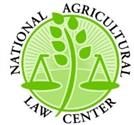In time for another farmers’ market season, Ohio has a new food license available for food entrepreneurs who sell eggs, meats, and certain home-produced foods at farmers markets and similar venues. A new “Low Risk Mobile Retail Food Establishment license” (Low Risk MRFE) offers a lower risk level license that will benefit many of Ohio’s farm-based and home-produced food vendors. Regulations establishing the new license were effective on February 12, 2024.
Ohio law has historically required an MRFE license for vendors selling certain foods from mobile units such as trucks, trailers, tents, and stalls at farmers markets and similar locations. All mobile vendors, regardless of the risk level of the food they were selling, had to obtain the same type of MRFE license. That changes with the new regulations, which create two types of MRFE licenses, low risk and high risk, and different licensing requirements for each.
The new Low Risk MRFE license offers two positive changes for the mobile food vendors who qualify for it:
- The Low Risk MRFE license will be half the cost of the High Risk MRFE license, and,
- Low Risk MRFE license holders can use non-mechanical refrigeration rather than commercial equipment to maintain their food product temperatures.
Here’s an explanation of the new Low Risk MRFE license option.
Mobile vendors that qualify for the Low Risk MRFE license
The Low Risk MRFE license is available for mobile vendors whose activities fall into a low risk level. Low risk level activity means the food poses a potential risk to the public in terms of sanitation, food labeling, sources of food, and food storage practices at the mobile unit, but the risk is lower than higher risk food activities. Low risk activities involve foods that were “pre-packaged” before being brought to sell at the mobile unit, and include the activities of holding pre-packaged refrigerated or frozen foods that require temperature controls for safety and offering pre-packaged foods that do not require temperature controls for safety. See Ohio Admin. Code 901:3-4-05(E)
If pre-packaged, these foods that are held and offered for sale from a mobile unit will qualify for the Low Risk MRFE:
- Eggs
- Frozen and refrigerated meats and fish
- Foods from a licensed Home Bakery that require refrigeration, such as cheesecakes and cream pies
- Cheeses and dairy products from a licensed Milk Producer or Milk Processor
- Frozen foods from a facility with a Frozen Foods License
- Cottage foods from a cottage food operation, but the MRFE is not required if the cottage foods are sold at any of these locations: farmers market, farm market, registered farm product auction, a political subdivision sponsored festival or celebration, or direct from the producer’s residence.
Holding temperature requirements for a Low Risk MRFE
There has long been confusion about the type of equipment an MRFE vendor must use to maintain the temperature of refrigerated or frozen foods, and some health departments have required vendors to use only commercial refrigerators or freezers. That will change under the new rule, which allows a Low Risk MRFE license holder to choose whether to use mechanical or non-mechanical refrigeration such as ice, ice packs, gel packs, or dry ice. The rule does not require the use of commercial equipment.
There are several important points mobile vendors should note about the new rule:
- When applying for the MRFE license or renewal, a vendor should explain their refrigeration choice and method, and the health department might require a plan or process for replenishing the cooling material if using non-mechanical equipment. The health department will note the refrigeration information on the MRFE license.
- The new rule requires a vendor to refresh or replenish the ice, ice packs, gel packs, or dry ice every four hours.
- A vendor should keep a working thermometer inside each cooler or refrigerating unit and be able to document that the temperature is within the allowable range for the food held in the unit.
- Gel packs and dry ice are preferred non-mechanical methods for maintaining food packaged in paper because wet ice can destroy paper packages and increase food safety risk.
See Ohio Admin. Code 3717-1-04.1(K)(K)
Lesser fee for Low Risk MRFE licenses
The new rule specifies that a Low Risk MRFE license fee will be 50% of the health department’s fee for high risk MRFEs. See Ohio Admin. Code 901:3-4-03(A)
New signage requirement for MRFEs
The new rule also requires any MRFE vendor to display specific information on the exterior of the mobile unit, in individual lettering at least three inches high and one inch wide. The information must include:
- Name of the operation
- The operation’s city of origin
- The operation’s telephone number, including area code
See Ohio Admin. Code 901:3-4-02(I)
High Risk MRFEs
A High Risk MRFE creates higher potential risks due to concerns with receiving, holding, cooking, cooling, processing, handling, and heating food products. Activities such as assembling or cooking, heating, and reheating foods are high risk activities. A few examples of high risk activities include making kettle corn or soft serve ice cream. Most farm-based and home-produced food activities will not require the High Risk MRFE. See Ohio Admin. Code 901:3-4-05(E)
For additional questions about the new Low Risk MRFE license, contact your local health department or the Ohio Department of Agriculture’s Food Safety Division.




